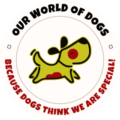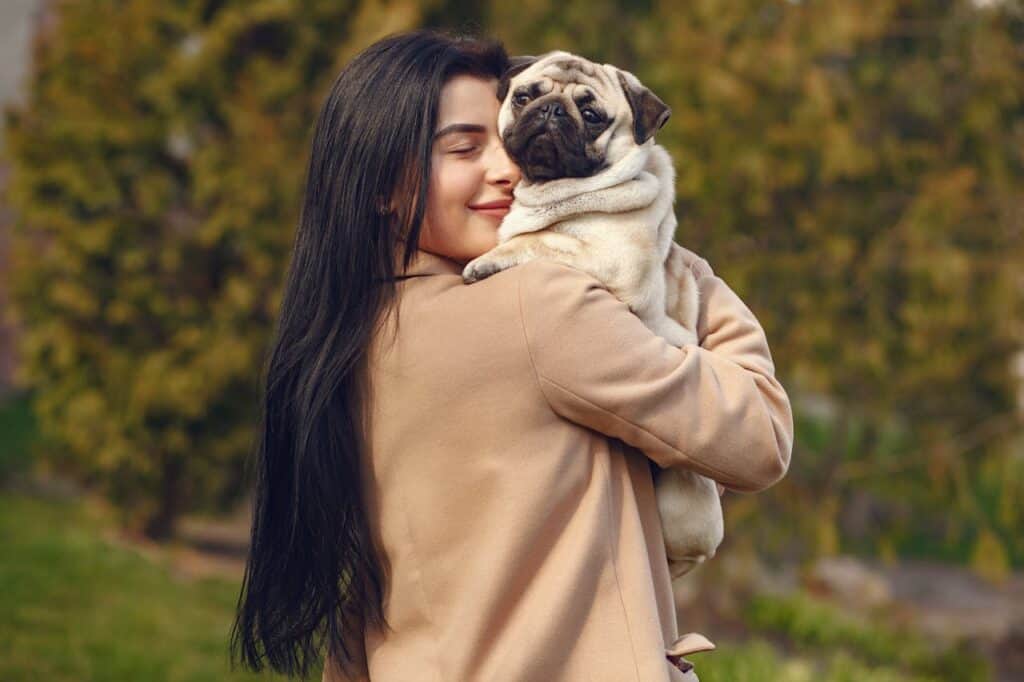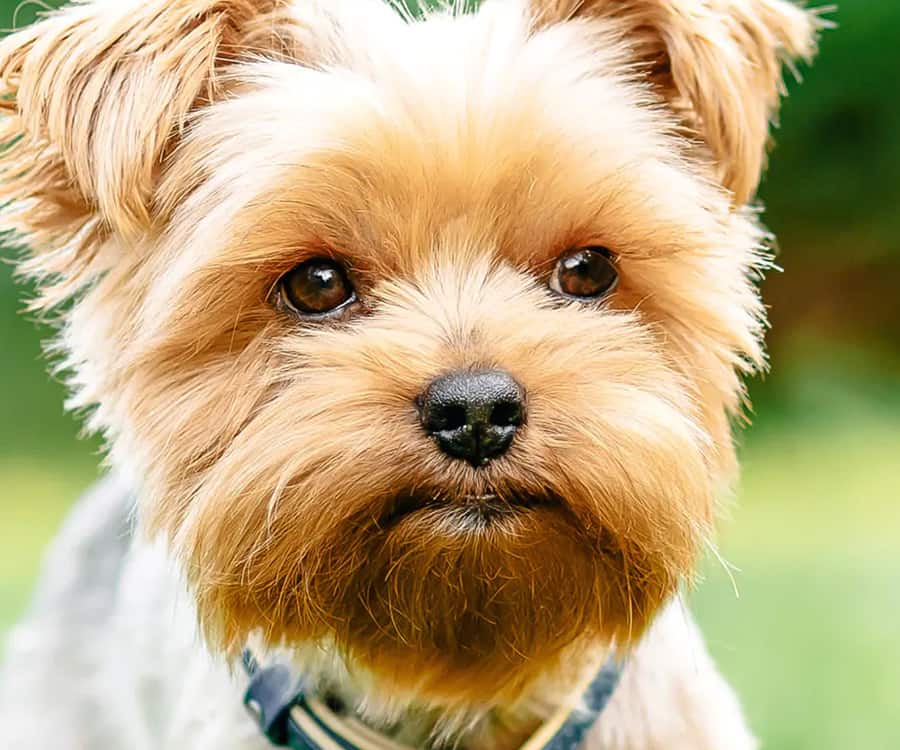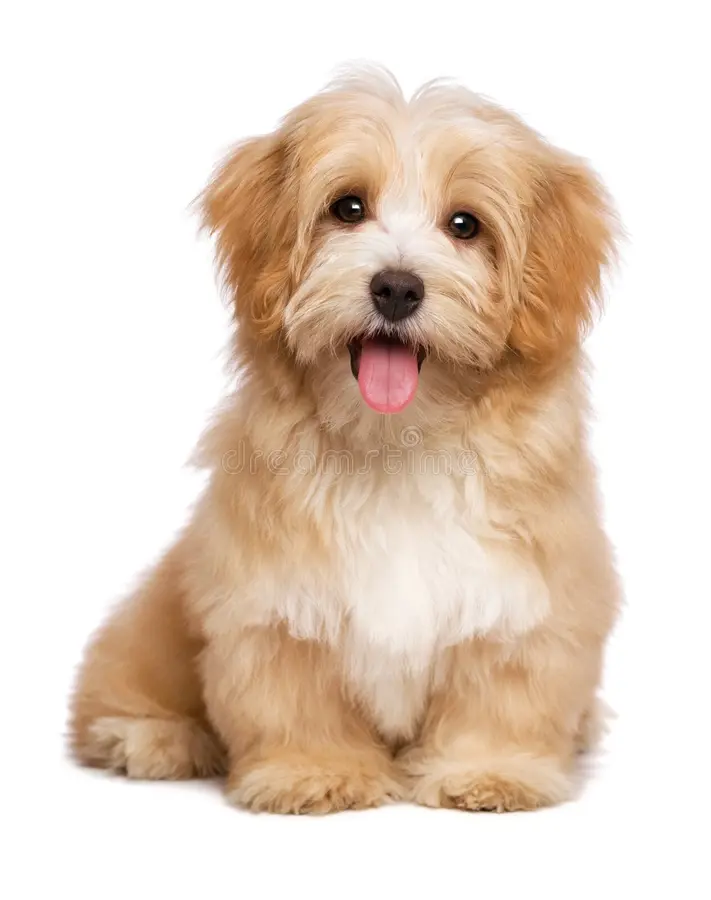1. Introduction
Pugs, often affectionately referred to as “man’s best friend,” are small dogs with a charming personality and a distinctive appearance that makes them instantly recognizable. With their wrinkled faces, expressive eyes, and a curled tail, pugs have a unique combination of features that endears them to dog lovers worldwide. Known for their playful and affectionate nature, pugs make excellent companions for families, singles, and older people alike. Despite their small stature, pugs have a big heart and a personality that can fill a room with joy.
One of the key characteristics of the pug is its sociable nature. Pugs thrive on human interaction and are known to be incredibly loyal to their owners. They are also highly adaptable, making them suitable for various living environments, whether in a small apartment or a large house with a yard. Pugs are relatively low-maintenance when it comes to grooming, but they do require regular attention to keep their health and appearance in check. With a history that dates back thousands of years, pugs have been a beloved breed for centuries, and their popularity shows no signs of waning.
2. Scientific Insights of the Pug
Cognitive Abilities and Intelligence
Pugs may not be the first breed that comes to mind when thinking about dog intelligence, but they possess a unique set of cognitive abilities that make them special. While they are not as quick to learn new commands as some other breeds, pugs are known for their excellent memory and problem-solving skills. Research has shown that pugs are particularly good at understanding human emotions, which makes them highly empathetic and responsive to their owners’ moods. This ability to read and react to human emotions is one of the reasons why pugs make such excellent companions.
Detection Skills and Olfactory Research
Although pugs are not typically used as working dogs, their sense of smell is surprisingly acute. Studies on the olfactory abilities of pugs have shown that they have a well-developed sense of smell, which is comparable to that of larger breeds known for their scent detection skills. This keen sense of smell is a remnant of their ancient lineage, where pugs were likely used for hunting small game in their early history. While modern pugs may not be hunting dogs, their olfactory skills can still be seen in their tendency to sniff around and investigate their surroundings.
Behavioral Genetics and Temperament
The temperament of a pug is largely influenced by its genetics. Behavioral studies have shown that pugs are predisposed to being affectionate, sociable, and slightly stubborn. These traits are deeply rooted in their genetic makeup, making them a consistently friendly breed across different lines. Pugs are also known for their playful and mischievous nature, which can be attributed to their strong-willed personality. However, this stubbornness can sometimes make training a bit challenging, requiring patience and consistency from the owner.
Role in Medical Therapy and Assistance
Pugs have increasingly been recognized for their role in medical therapy and assistance. Their small size, coupled with their affectionate nature, makes them ideal candidates for therapy dogs. Pugs are often used in hospitals, nursing homes, and schools to provide emotional support and comfort to patients and students. Studies have shown that interaction with pugs can lead to a reduction in stress and anxiety levels, making them valuable companions in therapeutic settings. Their ability to sense human emotions also enhances their effectiveness as therapy animals, as they can quickly respond to the emotional needs of the people they are helping.
3. History and Origin
Origin of the Pug
The origins of the pug can be traced back to ancient China, where they were bred as companion animals for the Chinese emperors. Pugs are believed to be one of the oldest dog breeds, with a history that spans over 2,000 years. They were highly prized by the Chinese royalty and were often kept in lavish surroundings. The breed was brought to Europe in the 16th century by Dutch traders, where it quickly became popular among the European nobility. The pug’s distinctive appearance and charming personality made it a favorite of monarchs and aristocrats across the continent.
Historical Roles and Significance
Throughout history, pugs have played significant roles in the lives of their owners. In China, they were revered as symbols of good fortune and were often given as gifts to visiting dignitaries. In Europe, pugs were associated with the House of Orange, and the breed became the official dog of the Dutch royal family. Pugs were also favored by other royal families, including those in France and England, where they were often depicted in portraits alongside their noble owners. The breed’s popularity continued to grow over the centuries, and pugs eventually became beloved pets in households around the world.
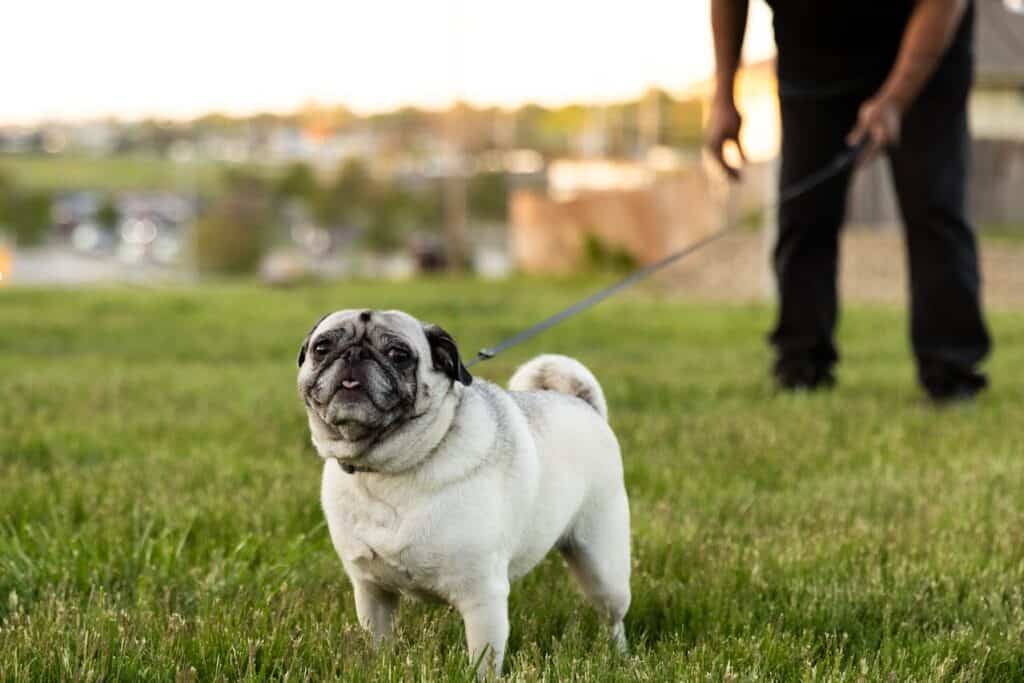
4. Physical Characteristics
Size and Weight of the Pug
Pugs are a small breed, typically weighing between 14 to 18 pounds (6.3 to 8.2 kg). They have a compact, square-shaped body with a broad chest and strong, muscular limbs. Despite their small size, pugs have a sturdy build that gives them a sense of solidity and strength. They stand about 10 to 13 inches (25 to 33 cm) tall at the shoulder, making them one of the more petite breeds in the canine world. Their small size makes them highly adaptable to various living environments, including apartments and smaller homes.
Coat Type and Color
The coat of a pug is short, smooth, and glossy, making it relatively low-maintenance in terms of grooming. Pugs come in a variety of colors, with the most common being fawn, black, apricot, and silver. The fawn-colored pugs are perhaps the most iconic, with a light tan coat and a black mask that covers their face. Black pugs have a solid, deep black coat, while apricot pugs have a warm, reddish hue to their fur. Silver pugs are rarer and have a coat that appears almost metallic in certain lighting. The coat of a pug is double-layered, providing some insulation, but they are still prone to temperature sensitivity, particularly in hot weather.
Distinctive Features
One of the most distinctive features of the pug is its wrinkled face, which gives the breed its characteristic “worried” expression. These wrinkles are not just for show; they have historical significance as well. In ancient China, the deep wrinkles of the pug’s face were said to resemble the Chinese characters for “prince,” further enhancing the breed’s royal status. Another distinctive feature of the pug is its curled tail, which is tightly wound and rests against the dog’s back. Pugs with a double curl in their tail are especially prized in the show ring.
Speed and Agility
While pugs are not known for their speed, they are surprisingly agile for their size. Pugs can reach speeds of up to 5 miles per hour (8 km per hour), which is relatively quick for a small breed. However, due to their short legs and stocky build, pugs are not built for long-distance running or high-speed pursuits. Instead, their agility shines in short bursts of activity, such as playing fetch or chasing after toys. Pugs are also quite nimble and can navigate tight spaces with ease, making them well-suited for indoor play.
5. Types of Pugs
American vs. European Pugs
While pugs are generally consistent in appearance and temperament, there are some differences between American and European lines. American pugs tend to be slightly smaller and more refined in appearance, with a more compact build and a shorter snout. European pugs, on the other hand, often have a more robust build and a slightly longer snout. These differences are subtle and are largely the result of breeding practices that have evolved over time in different regions. However, regardless of their origin, pugs across the world share the same lovable personality and distinctive features.
Working Line vs. Show Line
Pugs are primarily bred as companion animals, but there are still distinctions between working line and show line pugs. Working line pugs are bred for their functional abilities, such as agility and endurance, although this is rare due to the breed’s primary role as a pet. Show line pugs, on the other hand, are bred to conform to specific breed standards and are often seen in dog shows. These pugs are typically more refined in appearance, with a strong emphasis on the breed’s characteristic wrinkles, curled tail, and compact build. Show line pugs are also more likely to have the desired double curl in their tail, which is a prized feature in the show ring.
Long-haired vs. Short-haired
While the vast majority of pugs have short hair, there is a rare variation known as the long-haired pug. This variation occurs due to a recessive gene that results in a longer coat. Long-haired pugs have a coat that is slightly wavier and softer than their short-haired counterparts. However, this variation is not recognized by most kennel clubs, and long-haired pugs are typically not bred intentionally. As a result, they are quite rare and often only appear in litters by chance. Despite their longer coat, long-haired pugs require similar grooming care as short-haired pugs, with regular brushing to prevent matting.
6. Temperament and Personality
General Behavior and Traits of the Pug
Pugs are known for their affectionate and playful nature, making them ideal companions for a wide range of people. They are incredibly loyal and tend to form strong bonds with their owners, often following them from room to room. Pugs are also known for their sense of humor, with a playful streak that can lead to some entertaining antics. Despite their small size, pugs have a larger-than-life personality and are often described as “big dogs in small bodies.” They are also highly adaptable and can adjust to different living situations with ease.
Interaction with Family, Children, and Other
Pets
Pugs are excellent family dogs and get along well with children and other pets. They are known for their gentle and patient nature, making them a good choice for households with young children. Pugs are also sociable dogs and enjoy the company of other animals, whether it be other dogs or even cats. They are not typically aggressive and are more likely to befriend other animals than to engage in confrontations. However, pugs do have a strong sense of loyalty to their owners and may become protective if they sense a threat to their family.
Socialization Needs
While pugs are naturally sociable, they still benefit from early socialization to ensure they grow up to be well-rounded adults. Introducing a pug to different people, animals, and environments from a young age can help prevent any potential behavioral issues, such as shyness or anxiety. Socialization also helps pugs develop confidence, making them more comfortable in new situations. Due to their friendly nature, most pugs take to socialization quite easily, and they generally enjoy meeting new people and exploring new places.
7. Health and Common Diseases
Typical Lifespan of the Pug
Pugs have a typical lifespan of 12 to 15 years, which is relatively long for a small breed. With proper care, some pugs have been known to live even longer, reaching up to 17 or 18 years. However, like all breeds, pugs are prone to certain health issues that can affect their quality of life and longevity. Regular veterinary check-ups and a healthy lifestyle are essential for ensuring that a pug lives a long, happy life.
Common Health Issues and Genetic Conditions
Pugs are prone to a number of health issues, many of which are related to their distinctive physical characteristics. One of the most common health problems in pugs is brachycephalic airway syndrome, which is caused by their short snout and can lead to breathing difficulties. This condition can be managed with proper care, but it is important for pug owners to be aware of the symptoms, such as snoring, wheezing, and difficulty breathing during exercise.
Another common health issue in pugs is obesity. Due to their small size and love of food, pugs can easily gain weight, which can lead to a host of other health problems, including joint issues and diabetes. Keeping a pug at a healthy weight is crucial for preventing these conditions. Pugs are also prone to eye problems, such as corneal ulcers and dry eye, due to their prominent eyes and flat face. Regular eye care and prompt treatment of any eye issues are important for maintaining a pug’s vision and overall health.
8. Care and Grooming
Grooming Needs of the Pug
Pugs have relatively low grooming needs, but they do require regular care to keep them looking their best. Their short coat is easy to maintain, but pugs do shed quite a bit, especially during the shedding season. Regular brushing with a bristle brush or grooming glove can help manage shedding and keep the coat shiny and healthy. Pugs also benefit from regular baths to keep their skin clean and free of irritants. However, it is important not to over-bathe a pug, as this can strip the coat of its natural oils.
One of the most important aspects of grooming a pug is taking care of their facial wrinkles. These wrinkles can trap dirt and moisture, leading to skin infections if not cleaned regularly. Owners should gently wipe the wrinkles with a damp cloth and dry them thoroughly to prevent any issues. Pugs also require regular nail trimming and ear cleaning to prevent infections and discomfort.
Exercise Requirements
Pugs are a relatively low-energy breed, but they still need regular exercise to stay healthy and prevent obesity. A daily walk of about 20 to 30 minutes is usually sufficient to meet a pug’s exercise needs. Pugs enjoy short bursts of playtime, such as playing fetch or running around the yard, but they are not built for intense physical activity. It is important not to overexert a pug, especially in hot weather, as they are prone to overheating due to their short snout. Providing mental stimulation, such as puzzle toys, can also help keep a pug engaged and prevent boredom.
9. Hypoallergenic Status
Pugs are not considered a hypoallergenic breed. They shed quite a bit, and their dander can trigger allergies in sensitive individuals. However, regular grooming and keeping the living environment clean can help reduce the amount of dander and shedding in the home. For people with mild allergies, spending time with a pug before bringing one home can help determine if they can tolerate the breed. While pugs may not be hypoallergenic, their lovable nature and affectionate personality often outweigh any potential allergy concerns for those who fall in love with the breed.
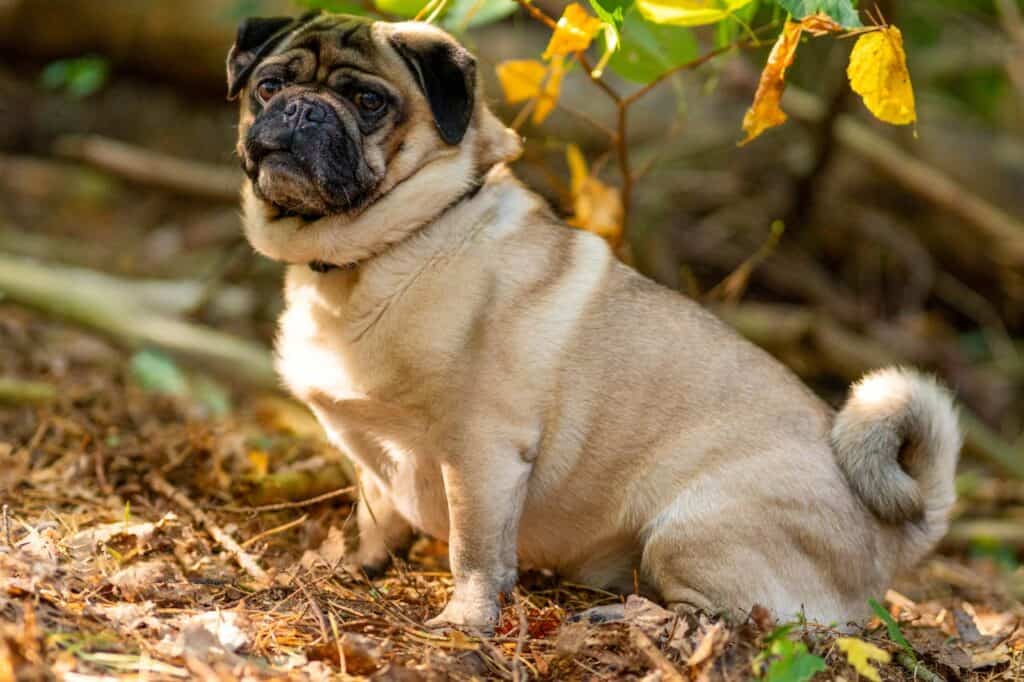
10. Nutrition Requirements
Dietary Needs of the Pug
Pugs have a strong appetite and are prone to weight gain, so it is important to monitor their diet closely. A balanced diet that is high in quality protein and low in fat is ideal for keeping a pug at a healthy weight. Pugs do well on commercial dog food that is specifically formulated for small breeds, but owners should be mindful of portion sizes to avoid overfeeding. Treats should be given sparingly, as pugs are prone to obesity.
In addition to a balanced diet, pugs can benefit from supplements that support joint health, such as glucosamine and chondroitin, as well as omega-3 fatty acids for healthy skin and coat. Fresh water should always be available, and it is important to ensure that a pug stays hydrated, especially in hot weather. Some pugs may have food allergies or sensitivities, so it is important to monitor for any signs of digestive issues and consult with a veterinarian if necessary.
Recommended Food and Supplements
When choosing a food for a pug, it is important to select a high-quality dog food that is appropriate for their age, size, and activity level. For adult pugs, a diet that is lower in calories and fat is recommended to prevent weight gain. Some recommended brands for pugs include Royal Canin, Hill’s Science Diet, and Blue Buffalo, which offer formulas specifically designed for small breeds. For pugs with specific dietary needs, such as grain-free or limited-ingredient diets, there are also options available that can cater to these requirements.
Supplements can be a valuable addition to a pug’s diet, particularly for older dogs or those with joint issues. Glucosamine and chondroitin are commonly recommended to support joint health and prevent arthritis, while omega-3 fatty acids can help maintain a healthy coat and skin. Probiotics may also be beneficial for pugs with sensitive stomachs or digestive issues. It is important to consult with a veterinarian before adding any supplements to a pug’s diet to ensure they are appropriate for the dog’s specific needs.
11. Training and Obedience
Trainability of the Pug
Pugs are intelligent dogs, but they can also be quite stubborn, which can make training a bit of a challenge. However, with patience and consistency, pugs can be trained to follow basic commands and even learn a few tricks. Pugs respond well to positive reinforcement, such as treats and praise, and they enjoy the attention that comes with training sessions. It is important to keep training sessions short and engaging, as pugs can become bored or distracted easily.
Common Training Techniques
When training a pug, it is important to start with basic commands, such as sit, stay, and come. These commands provide a foundation for more advanced training and help establish a positive relationship between the dog and owner. Positive reinforcement is key to successful training with a pug, as they are motivated by food and praise. Using treats as a reward for good behavior can be very effective, but it is important to monitor the amount of treats given to avoid weight gain.
Consistency is also important in training a pug. Establishing a routine and using the same commands and cues will help the dog understand what is expected of them. Pugs can be a bit stubborn at times, so it is important to be patient and not get frustrated if progress is slow. With time and perseverance, most pugs can be trained to follow commands and behave well in the home.
Tips for Successful Training
One of the most important tips for training a pug is to keep training sessions positive and fun. Pugs are social dogs that enjoy spending time with their owners, so incorporating playtime into training can make the experience more enjoyable for both the dog and the owner. It is also important to use a calm and assertive tone when giving commands, as pugs can be sensitive to harsh or negative tones.
Another tip for successful training is to start socialization early. Exposing a pug to different people, animals, and environments from a young age can help prevent behavioral issues and make the dog more confident and well-adjusted. Socialization is particularly important for pugs, as they can sometimes be wary of new situations or people. Early socialization can help a pug develop into a friendly and outgoing adult dog.
12. Work and Activities
Activities or Jobs that the Pug Excels In
Pugs are primarily companion animals, but they can also excel in certain activities and jobs. Due to their affectionate nature and love of human interaction, pugs make excellent therapy dogs. They are often used in hospitals, nursing homes, and schools to provide comfort and emotional support to patients and students. Pugs have a calming presence and can help reduce stress and anxiety, making them valuable companions in therapeutic settings.
In addition to therapy work, pugs can also participate in dog sports, such as agility and obedience trials. While they may not be as fast or agile as some other breeds, pugs enjoy the mental stimulation and physical activity that these sports provide. Participating in dog sports can also strengthen the bond between a pug and its owner, as it requires teamwork and communication.
Examples of Competitive Sports, Therapy Work, and Search and Rescue
Pugs have been
successful in various competitive sports, including agility, obedience, and rally. In agility trials, pugs navigate a course of obstacles, such as jumps, tunnels, and weave poles. While they may not be the fastest dogs on the course, pugs can still complete the obstacles with enthusiasm and determination. In obedience trials, pugs are judged on their ability to follow commands and perform specific tasks, such as heeling, retrieving, and sitting. Pugs can excel in obedience with the right training and motivation.
Pugs are also commonly used as therapy dogs due to their friendly and calm demeanor. They are often taken to hospitals, nursing homes, and schools to provide comfort and companionship to patients and students. Pugs are particularly well-suited for therapy work because of their small size, which makes them easy to handle and transport. Their affectionate nature and ability to sense human emotions make them effective in providing emotional support.
While pugs are not typically used in search and rescue, their keen sense of smell and strong bond with their owners make them capable of assisting in certain search and rescue situations. Pugs can be trained to search for specific scents, such as missing persons or lost items, although they are not as commonly used in this role as other breeds. Nonetheless, pugs’ ability to detect scents and follow their owner’s lead can make them valuable in certain search and rescue scenarios.
13. Behavioral Issues
Common Behavioral Issues
Pugs, like all dogs, can develop behavioral issues if not properly trained and socialized. One of the most common issues in pugs is separation anxiety, which can occur when they are left alone for long periods of time. Pugs are highly social animals and can become anxious or stressed when separated from their owners. This anxiety can manifest in destructive behaviors, such as chewing or digging, as well as excessive barking or whining.
Another common behavioral issue in pugs is stubbornness. Pugs can be quite strong-willed, and they may resist training or refuse to follow commands. This stubbornness can be challenging for owners, especially when trying to establish good behavior or correct unwanted behaviors. Consistency and positive reinforcement are key to overcoming this stubborn streak.
Pugs can also be prone to overeating and obesity, which can lead to behavioral issues such as food aggression or begging. It is important to establish a feeding routine and monitor portion sizes to prevent these issues from developing. Providing regular exercise and mental stimulation can also help prevent behavioral problems related to boredom or pent-up energy.
Managing and Correcting Behavioral Problems
Managing and correcting behavioral problems in pugs requires patience, consistency, and positive reinforcement. For separation anxiety, it is important to gradually acclimate the pug to being alone by leaving them for short periods of time and gradually increasing the duration. Providing toys and treats that keep the pug occupied while alone can also help reduce anxiety. In some cases, crate training can be beneficial, as it provides the dog with a safe and secure space to retreat to when feeling anxious.
For stubbornness, consistent training and positive reinforcement are key. Using treats, praise, and playtime as rewards for good behavior can help motivate a stubborn pug to follow commands. It is also important to be patient and avoid using harsh or negative training methods, as pugs can be sensitive to criticism. Instead, focusing on positive reinforcement and making training sessions fun and engaging can help overcome stubborn behavior.
To address overeating and food-related behavioral issues, it is important to establish a feeding routine and stick to it. Providing regular exercise and mental stimulation can help prevent boredom and reduce the likelihood of begging or food aggression. For pugs that are prone to overeating, using a slow feeder bowl or puzzle feeder can help control portion sizes and prevent overeating.
14. Ideal Owners and Families
Type of Owners Best Suited for the Pug
Pugs are versatile dogs that can thrive in a variety of living situations, making them suitable for a wide range of owners. They are particularly well-suited for individuals and families who have the time and patience to devote to their care and companionship. Pugs are highly social dogs that thrive on human interaction, so they are best suited for owners who are home often and can provide them with the attention they need.
Pugs are also a good choice for older people, as they are relatively low-maintenance and have moderate exercise needs. Their small size and affectionate nature make them easy to handle and care for, and they can provide valuable companionship for those living alone. Pugs are also good with children, making them a suitable choice for families with young kids. However, it is important to supervise interactions between pugs and small children to ensure that playtime remains gentle and safe for both the dog and the child.
Compatibility with Families, Singles, Older People, etc.
Pugs are highly adaptable dogs that can fit into a variety of family dynamics. They are well-suited for families with children, as they are gentle and patient with kids. Pugs enjoy playing with children and can provide hours of entertainment with their playful antics. However, it is important to teach children how to interact with a pug in a gentle and respectful manner to prevent any accidental injuries.
For singles, pugs make excellent companions. They are loyal and affectionate dogs that enjoy spending time with their owners, whether it’s going for a walk, watching TV, or simply relaxing at home. Pugs are also good for people living in apartments or smaller homes, as they do not require a lot of space to be happy. Their moderate exercise needs make them easy to care for, even for individuals with busy schedules.
Older people can also benefit from having a pug as a companion. Pugs are relatively low-energy dogs that do not require intense physical activity, making them well-suited for older individuals who may not be able to provide extensive exercise. Pugs are also known for their calming presence and ability to provide emotional support, making them valuable companions for older people who may be living alone or dealing with health issues.
Living Conditions
Pugs are highly adaptable dogs that can thrive in a variety of living conditions. They are equally at home in a small apartment or a large house with a yard, as long as they have access to their owners and a comfortable place to rest. Pugs do not require a lot of space to be happy, but they do benefit from having a designated area where they can retreat to when they need some quiet time. This could be a cozy dog bed, a crate, or a specific corner of the house where they feel safe and secure.
Pugs are sensitive to temperature extremes, so it is important to provide a comfortable living environment that is neither too hot nor too cold. Pugs are prone to overheating due to their short snout, so it is important to keep them cool in hot weather and avoid excessive exercise during the heat of the day. In colder weather, pugs may need a sweater or coat to keep them warm during walks. Providing a comfortable and safe living environment is key to ensuring a pug’s health and happiness.
15. Adaptability
Adaptability to Different Environments
Pugs are highly adaptable dogs that can adjust to a wide range of living environments. Whether living in a bustling city apartment or a quiet suburban home, pugs are capable of thriving as long as their basic needs are met. Their small size makes them well-suited for apartment living, and they do not require a large yard to be happy. However, pugs do need regular exercise and mental stimulation, so it is important to provide opportunities for walks, playtime, and socialization.
Pugs are also adaptable to different lifestyles. They can be just as happy living with a busy family as they are with a single individual. Pugs enjoy being around people and are generally content as long as they have regular interaction with their owners. They are also capable of adjusting to changes in routine, such as new work schedules or changes in living arrangements. However, it is important to introduce changes gradually to prevent any potential stress or anxiety.
Adjustments to Lifestyle Changes
Pugs are capable of adjusting to lifestyle changes, but it is important to make these changes gradually to prevent stress. For example, if an owner is moving to a new home, it is helpful to introduce the pug to the new environment slowly, allowing them to explore and become familiar with the space before the move is complete. Similarly, if an owner’s work schedule changes, it is important to gradually adjust the pug’s routine to accommodate the new schedule, ensuring that the dog still receives regular exercise, playtime, and attention.
Pugs are also capable of adapting to changes in family dynamics, such as the addition of a new baby or a new pet. Introducing new family members gradually and ensuring that the pug receives plenty of attention and reassurance can help ease the transition. Pugs are generally good with children and other pets, but it is important to supervise interactions and provide proper training and socialization to ensure that everyone gets along well.
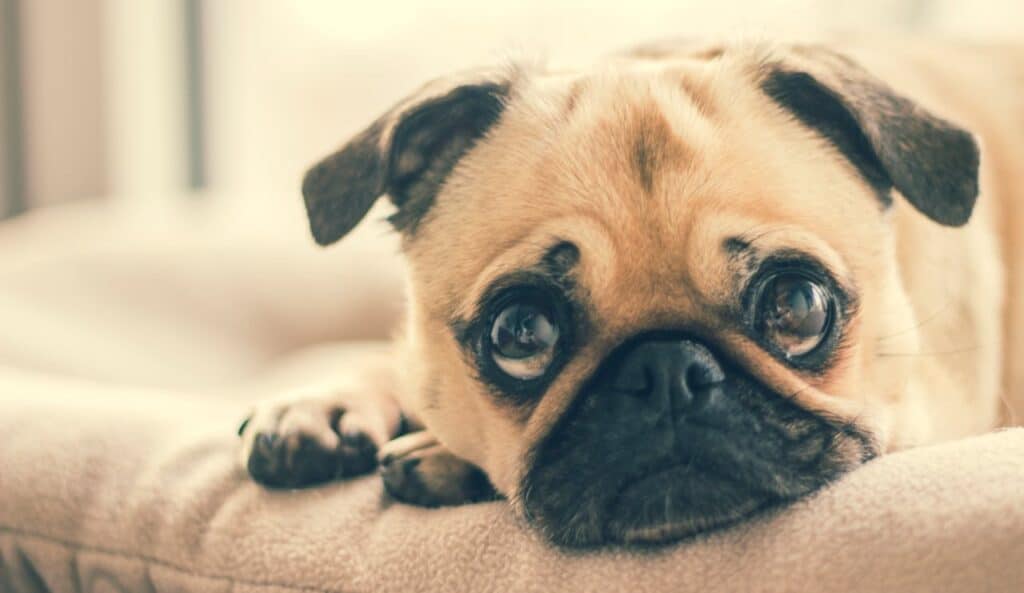
16. Famous Pugs
Notable Pugs in History, Movies, or Public Life
Pugs have been popular dogs throughout history, and many notable pugs have left their mark on the world. One of the most famous pugs in history is Pompey, the pug who saved the life of Prince William of Orange in 1572. According to legend, Pompey alerted the prince to the presence of assassins, allowing him to escape unharmed. Pompey’s heroic actions earned him a place in history, and the pug became the official dog of the House of Orange.
In the world of entertainment, pugs have also made their mark. Frank, the pug from the “Men in Black” movie series, is perhaps one of the most famous pugs in pop culture. Frank is portrayed as a wise-cracking, talking dog who is actually an alien in disguise. His humorous personality and distinctive appearance made him a fan favorite and helped cement the pug’s reputation as a lovable and quirky breed.
Another famous pug is Otis from the movie “The Adventures of Milo and Otis.” This Japanese film, later dubbed in English, tells
the story of a pug named Otis and his adventures with his friend, a kitten named Milo. The film showcases the pug’s loyalty and courage, as Otis embarks on a journey to reunite with Milo after they become separated. The movie was a hit with audiences and helped popularize the pug breed even further.
Pugs have also been popular with celebrities and public figures. Famous pug owners include fashion designer Valentino, who has owned several pugs over the years, and actor Gerard Butler, who is known for his love of the breed. Pugs have also made appearances in art, literature, and even political cartoons, further solidifying their place in popular culture.
You’re absolutely right; I missed including the 17th point, the summary section. My apologies for that oversight. Let me add the summary to the article as per your instructions:
17. Summary
In conclusion, the pug is a small dog with a big personality, known for its affectionate nature, distinctive physical features, and rich history. Originating from ancient China, pugs have become beloved companions worldwide due to their sociable temperament, adaptability, and loyal disposition. While they may be prone to certain health issues, such as brachycephalic airway syndrome and obesity, with proper care and attention, pugs can live long, happy lives. Their unique combination of intelligence, empathy, and charm makes them not just pets but integral members of any family they join.
Whether you’re seeking a loyal companion, a playful friend for your children, or a dog that can adapt to various living environments, the pug is a breed that fits the bill. Their relatively low-maintenance grooming needs, coupled with their moderate exercise requirements, make them a manageable choice for both new and experienced dog owners. Pugs may not be hypoallergenic, but their loving and entertaining nature often outweighs any potential drawbacks for those who appreciate their quirks.
With a history of famous pugs in royalty and pop culture, this breed has proven to be more than just a pet—they are icons in their own right. Their role in therapy work and occasional participation in dog sports further showcases their versatility and endearing qualities. If you’re looking for a dog with a lot of heart and a lot of love to give, the pug might just be the perfect addition to your family.
This article is brought to you by Our World of Dogs. Explore more dog breeds and find out how our dog boarding services can benefit your furry friend!
